AWS Certified Solutions Architect - Note (4)
Domain Name System (DNS)
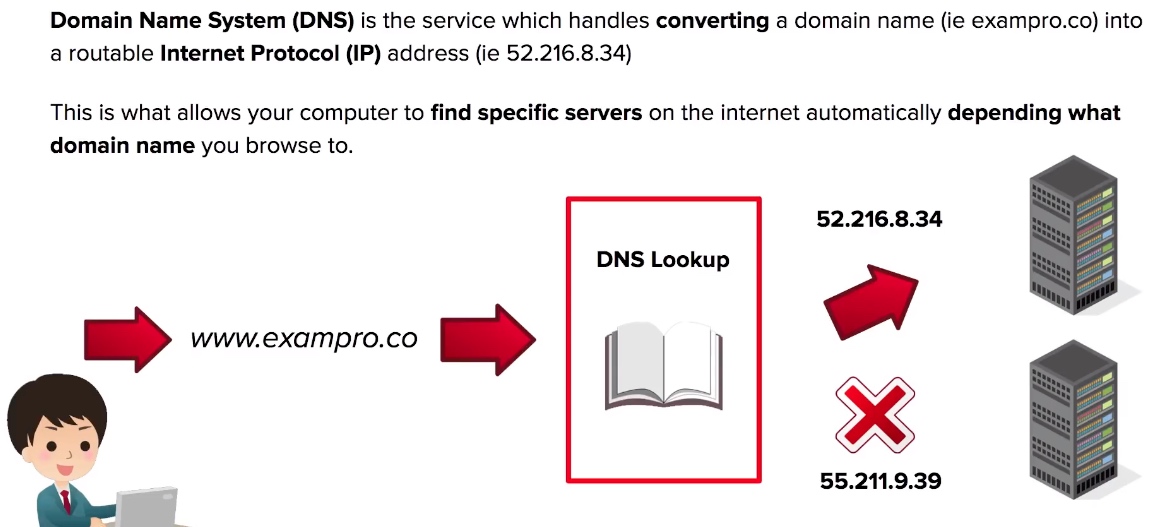
Internet Protocol (IP)

Domain Registrars
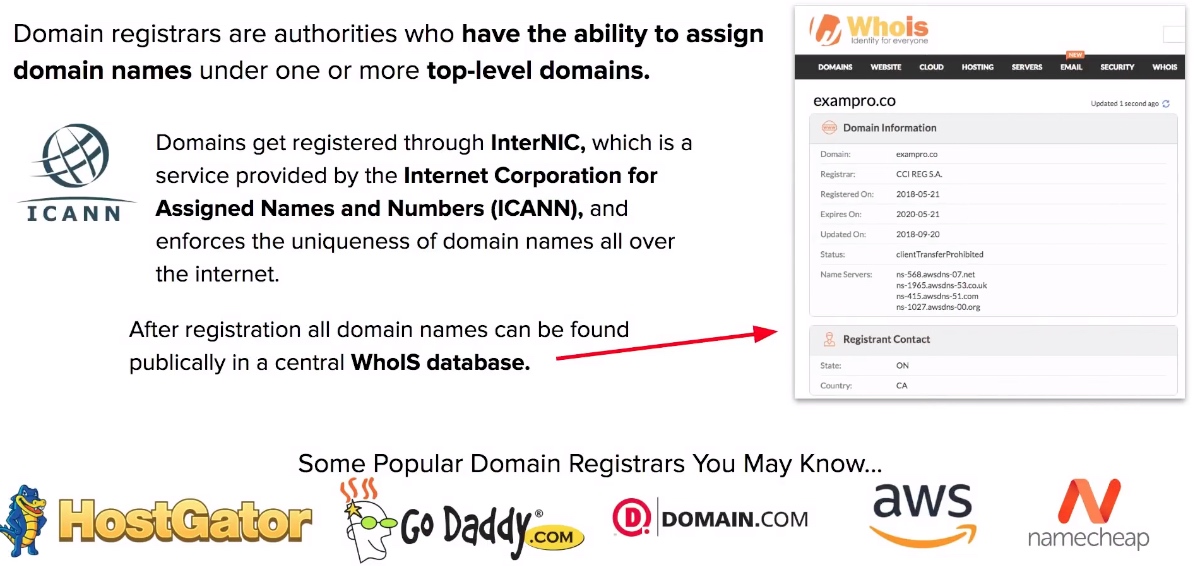
Top-Level Domains
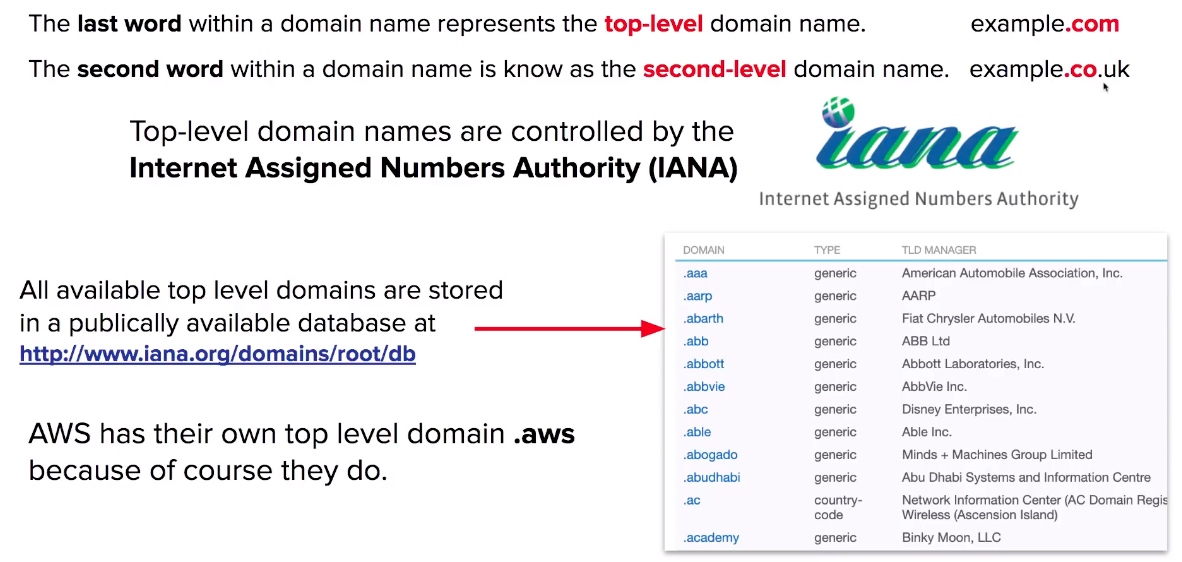
Start of Authority (SOA)
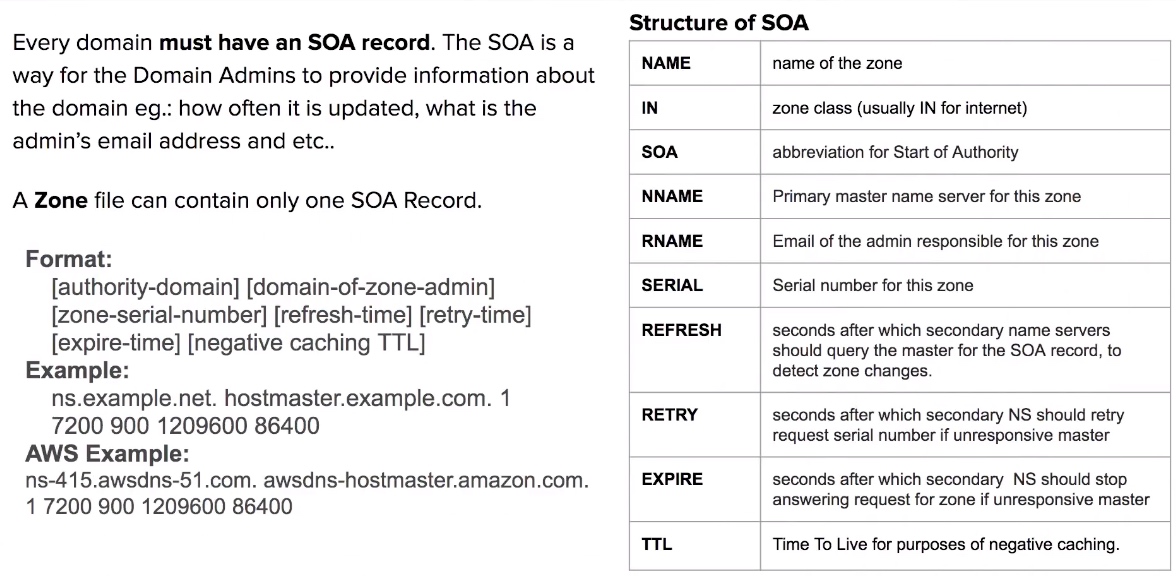
Address Records

CNAME Records
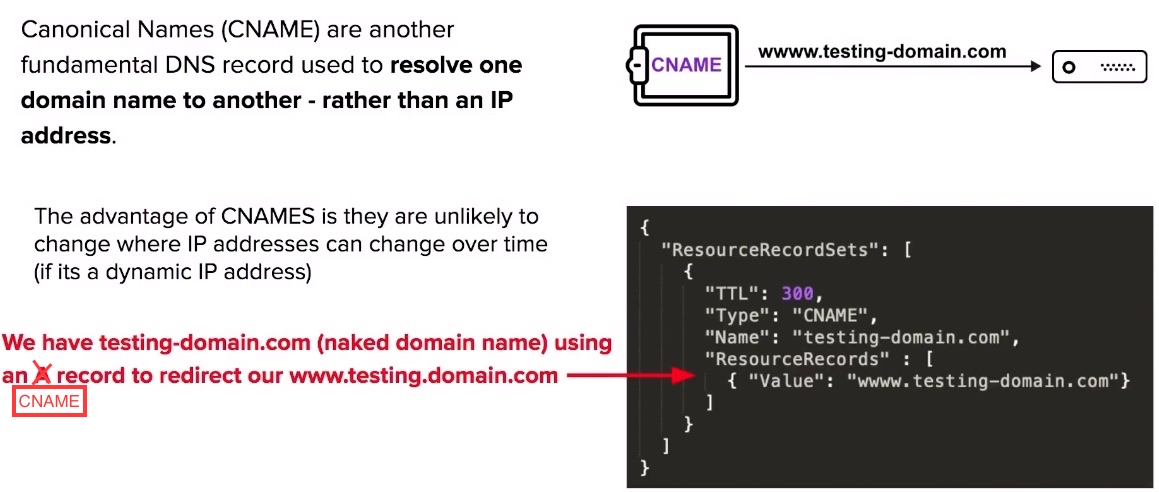
Name Server(NS) Records

Time to Live (TTL)

DNS CheatSheet
- Domain Name System (DNS) - Internet service that converts domain names into routable IP addresses.
- IPv4 - Internet Protocol Version 4 - 32 bit address space (limited number of addresses)
- IPv4 eg. 52.216.8.34
- IPv6 - Internet Protocol Version 6 - 128 bit address space (unlimited number of addresses)
- IPv6 eg. 2001:0db8:85a3:0000:0000:8a2e:0370:7334
- Top-Level Domain example.com last part of the domain.
- Second-Level Domain example.CO.UK second last part of the domain.
- Domain Registrar 3rd party company who you register domains through.
- Name Server The server(s) which contain the DNS records for a domain.
- Start of Authority (SOA) Contains information about the DNS zone and associated DNS records.
- A Record DNS record which directly converts a domain name into an IP address.
- CNAME Record DNS record which lets you convert a domain name into another domain name.
- Time to Live (TTL) The time that a DNS record will be cached. for (lower time means changes propagate faster)
Route53
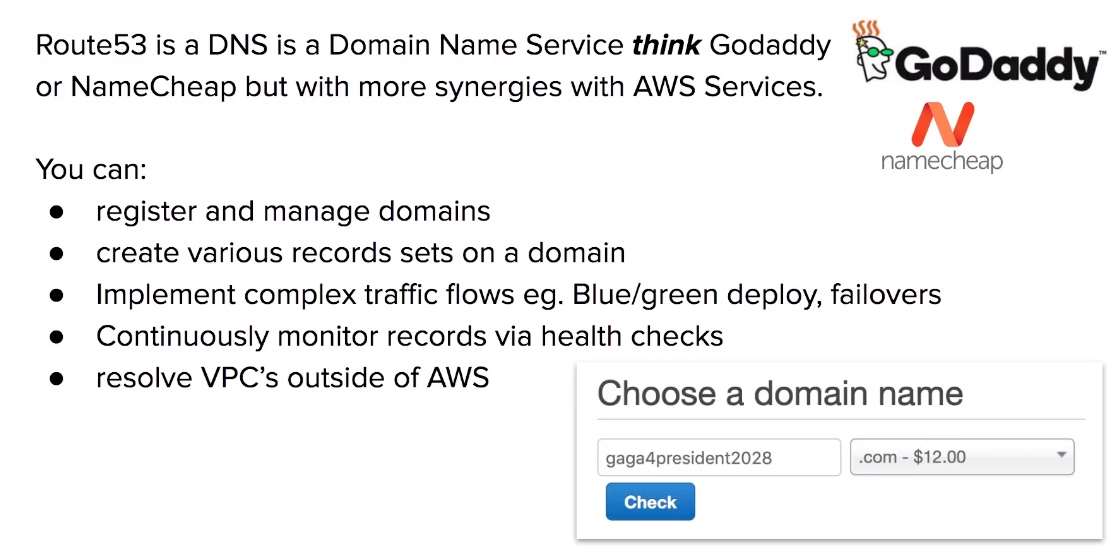
Route53 Use Case
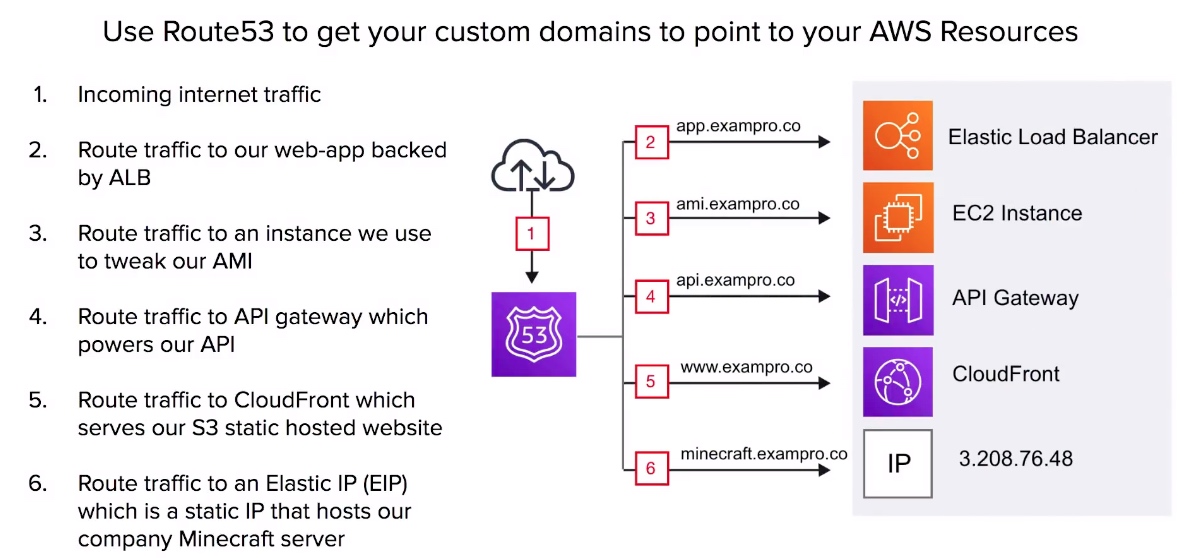
Route53 Record Sets
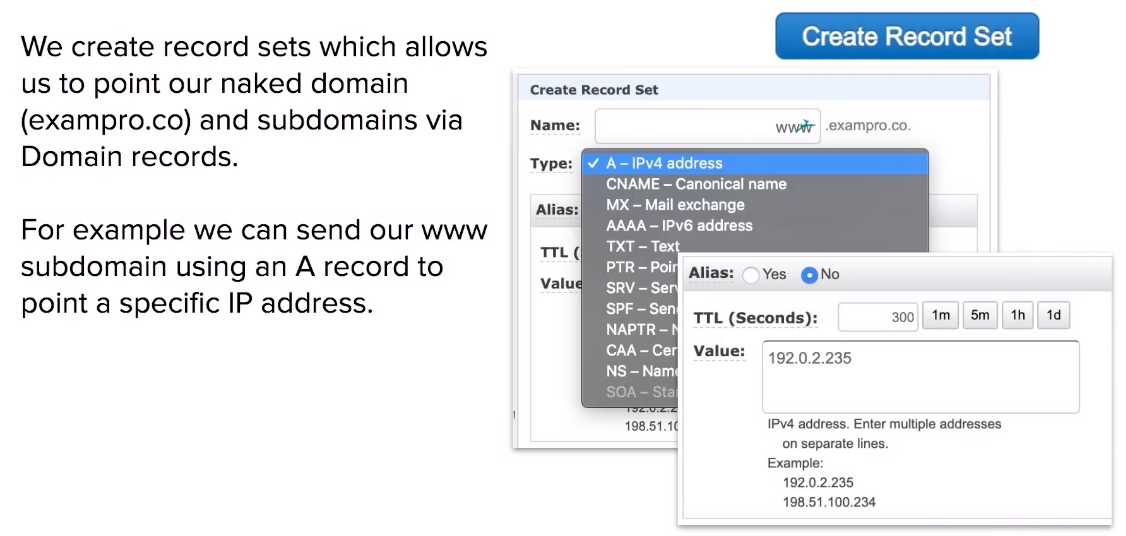
Route53 Alias Record
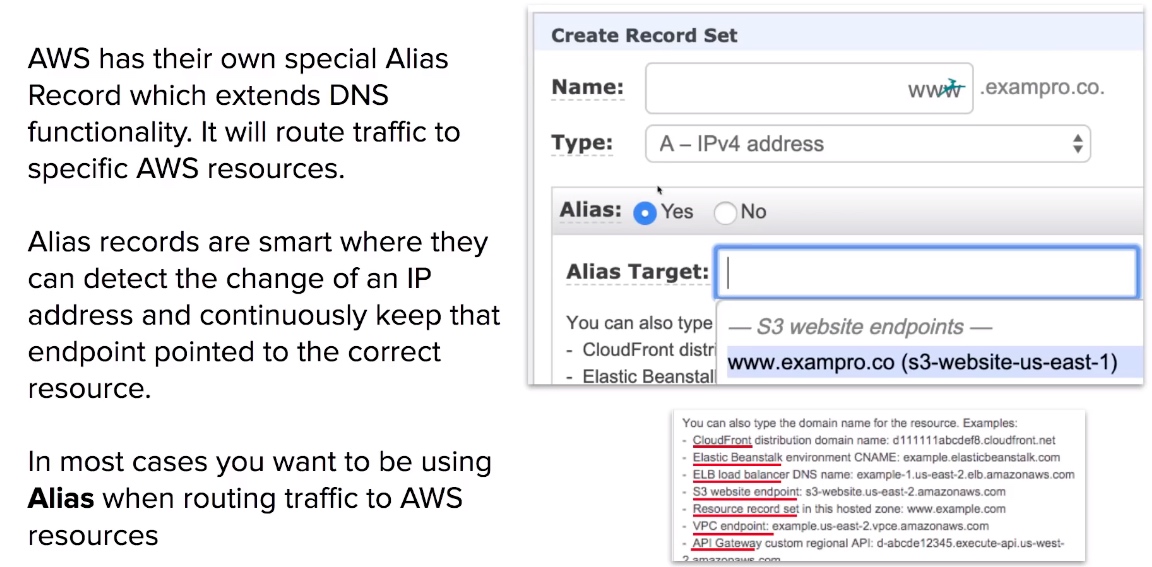
Route53 Routing Policies
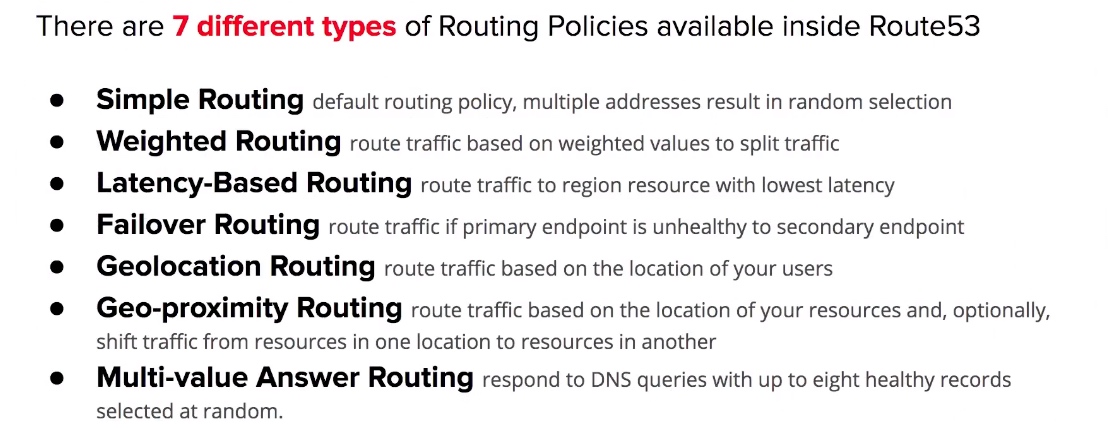
Route53 Traffic Flow
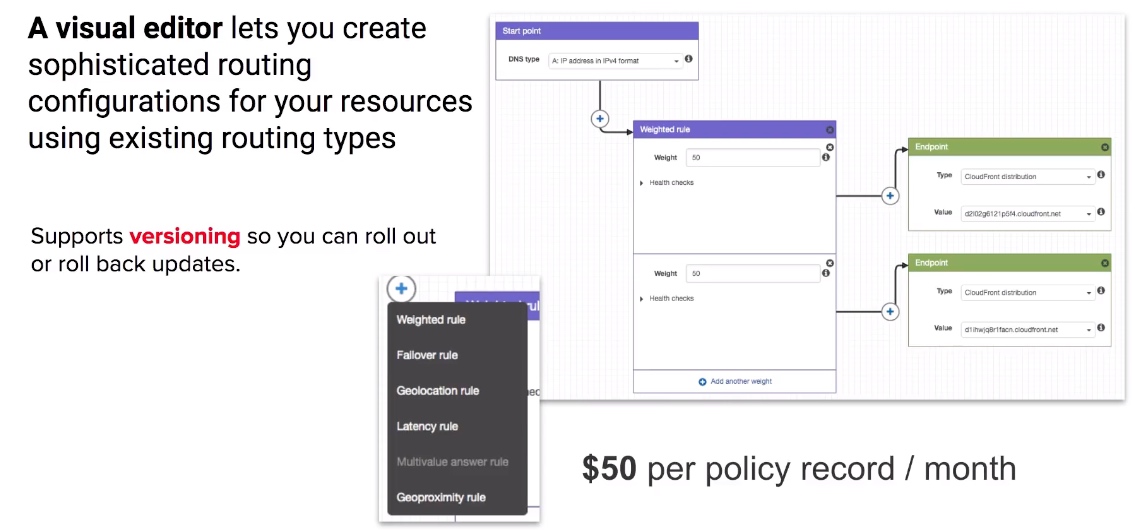
Route53 Simple Routing Policies
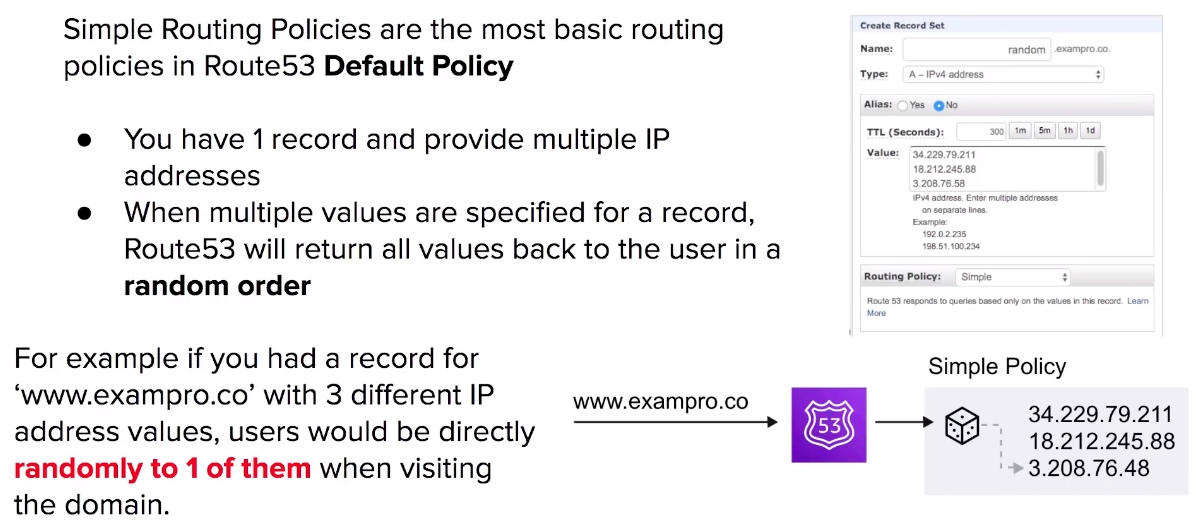
Route53 Weighted Routing Policies
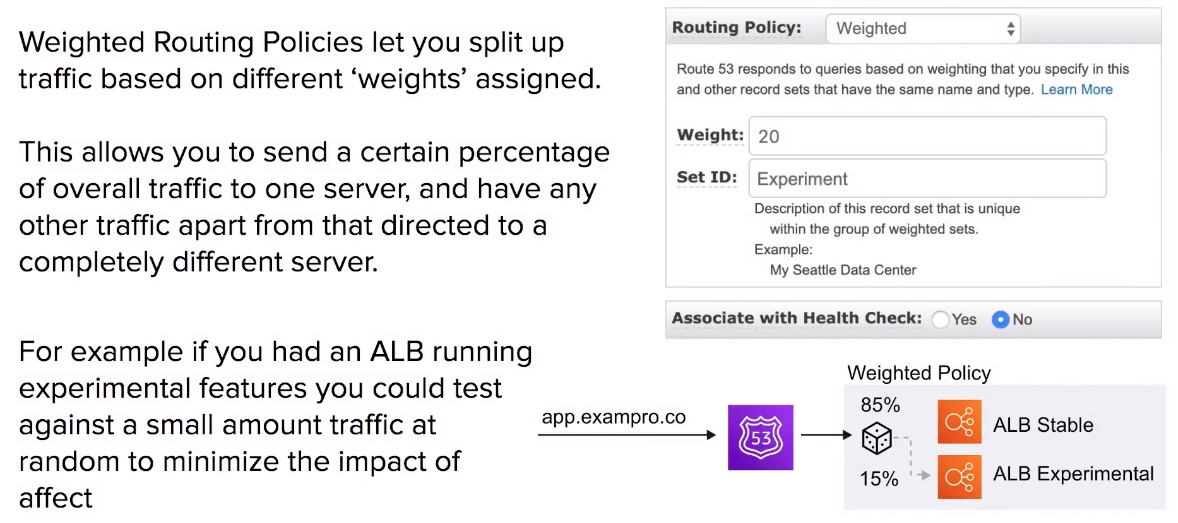
Route53 Latency Based Routing
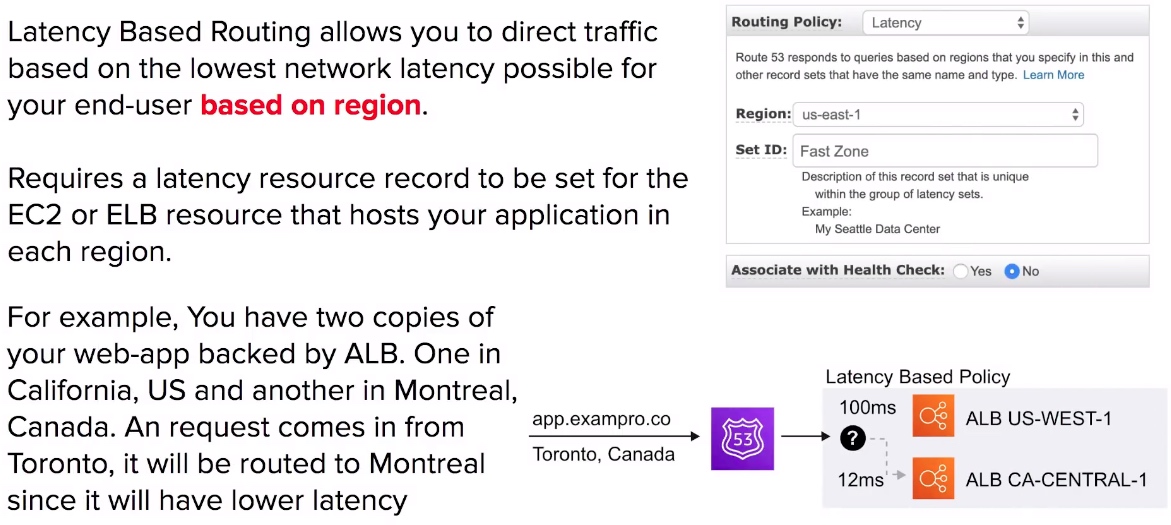
Route53 Failover Routing Policies
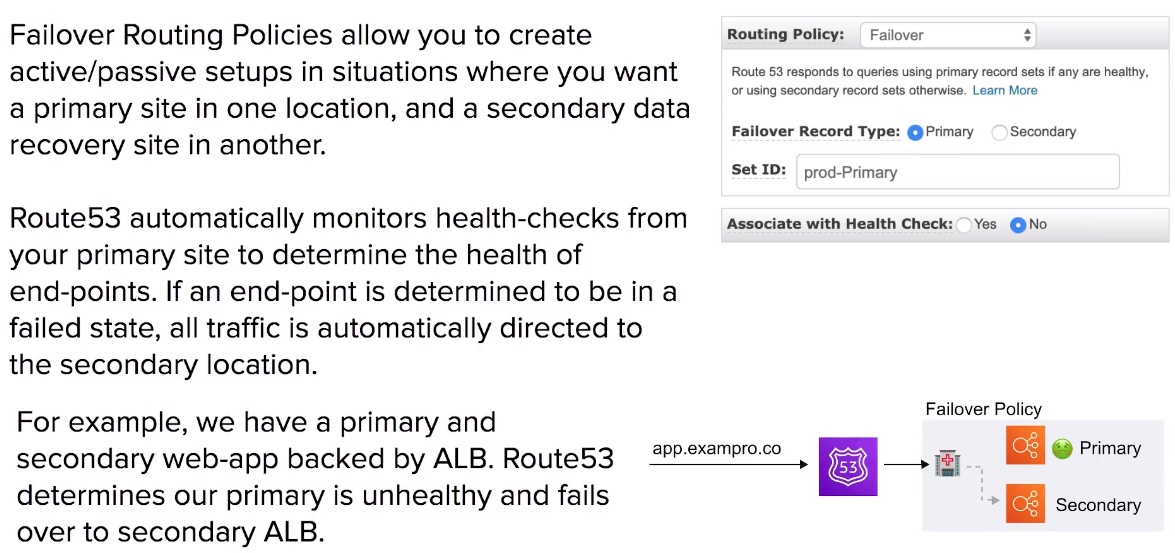
Route53 Geolocation Routing Policies

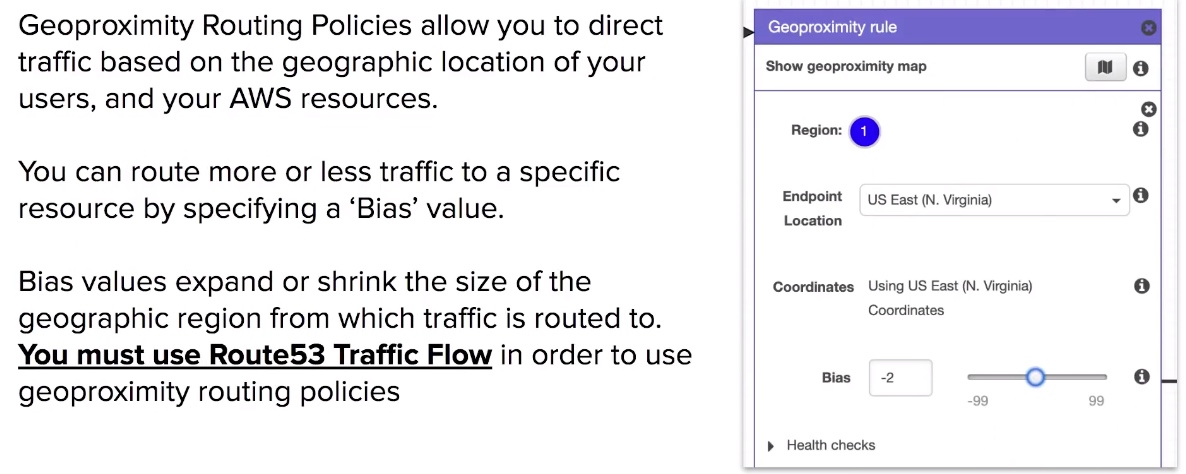
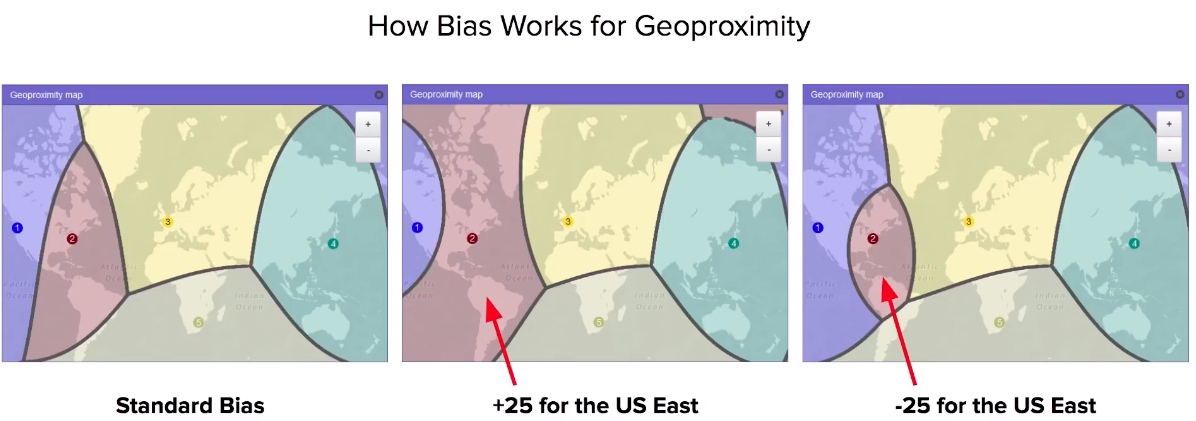

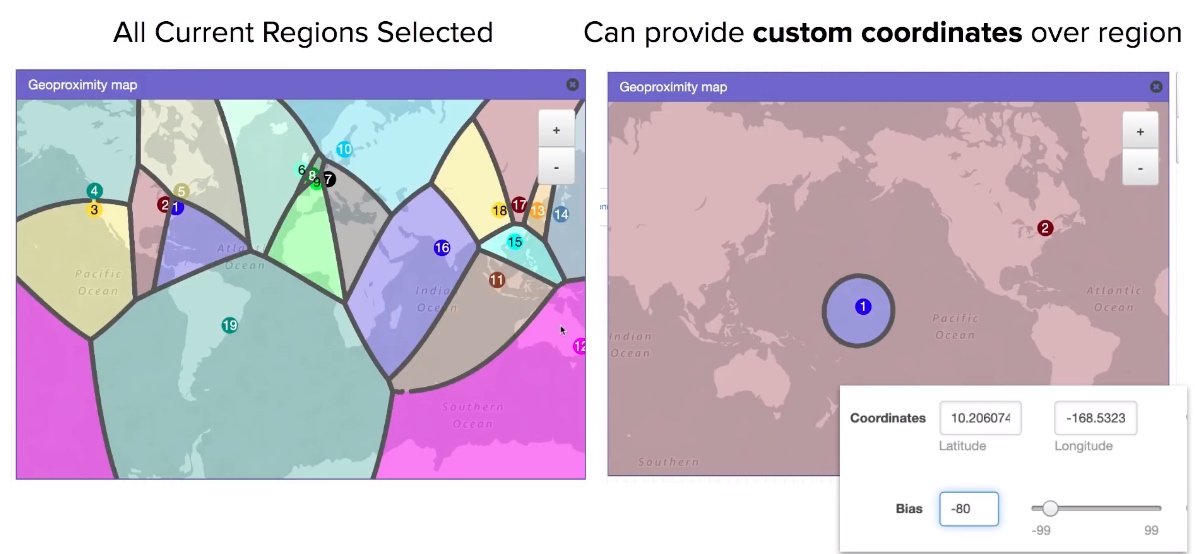
Route53 Multi-Value Answer Policies
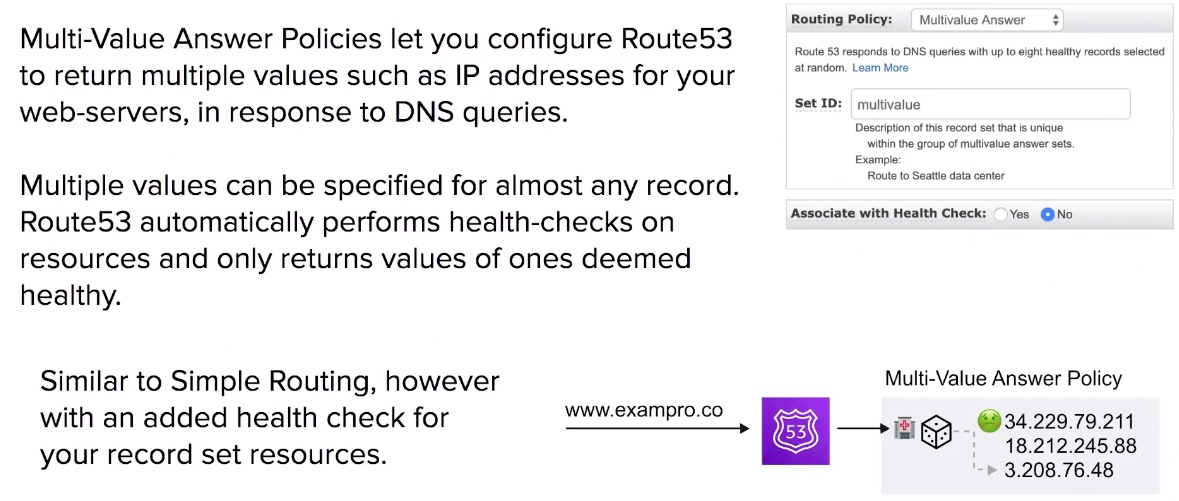
Route53 Health Checks
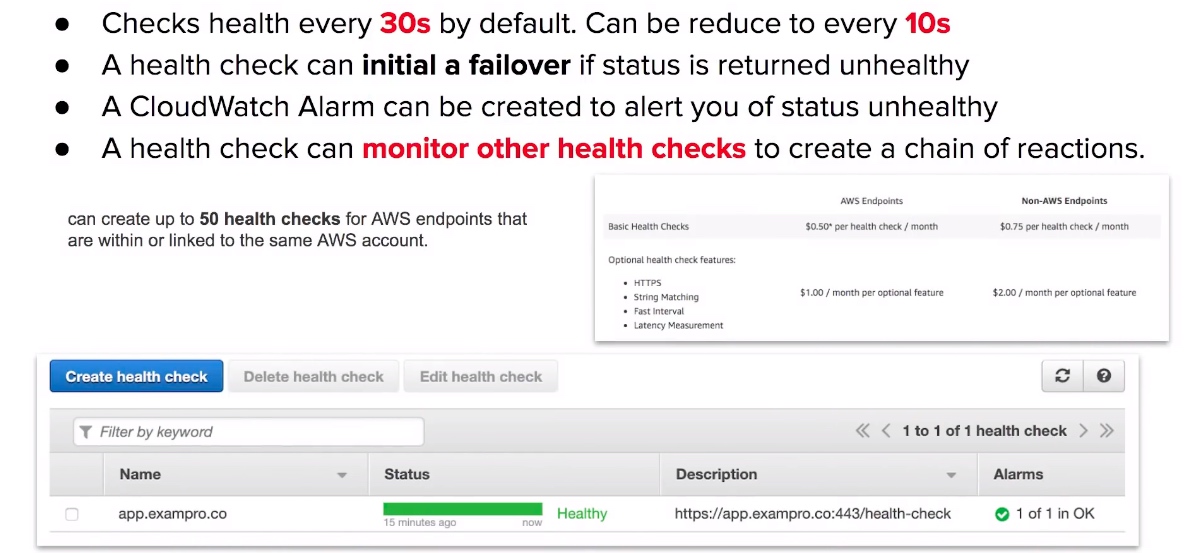
Route53 Resolver
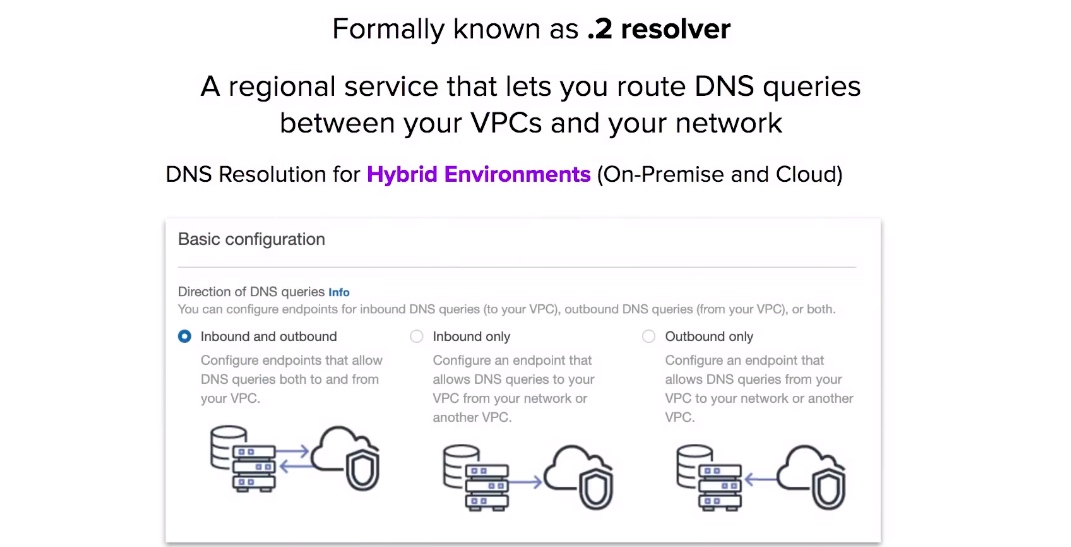
Route53 CheatSheet
- Route53 is a DNS provider, register and manage domains, create record sets. Think Godaddy or NameCheap.
- Simple Routing - Default routing policy, multiple addresses result in a random endpoint selection.
- Weighted Routing - Split up traffic based on different ‘weights’ assigned. (percentages)
- Latency-Based Routing - Directs traffic based on region, for lowest possible latency for users.
- Failover Routing - Primary site in one location, secondary data recovery site in another. (change on health check)
- Geolocation Routing - Route traffic based on the geographic location of a requests origin.
- Geo-proximity Routing - Route traffic based on geographic location using ‘Bias’ values. (needs Route53 Traffic Flow)
- Multi-value Answer Routing - Return multiple values in response to DNS queries. (using health checks)
- Traffic Flow - visual editor, for chaining routing policies, can version policy records for easy rollback.
- AWS Alias Record - AWS’ smart DNS record, detects changed IPs for AWS resources and adjusts automatically.
- Route53 Resolver - Lets you regionally route DNS queries between your VPCs and your network Hybrid Environments.
- Health checks can be created to monitor and automatically over endpoints. You can have health checks monitor other health checks.
comments powered by


























